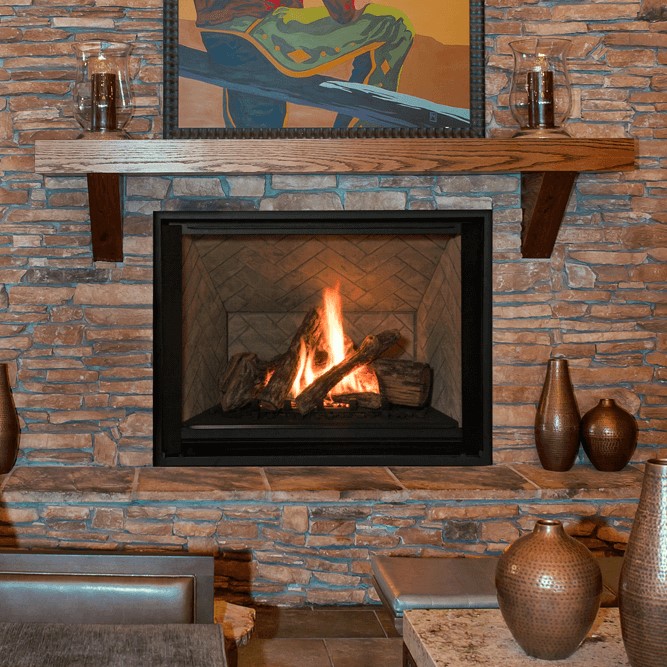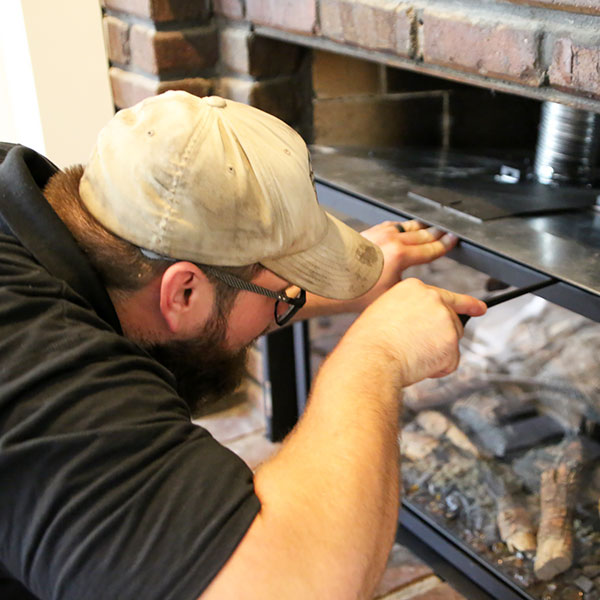Gas Fireplace Troubleshooting Tips
 Gas fireplaces have become increasingly popular in homes throughout the Kansas City KS/MO area. It’s not just a feature found in newer homes. Many homeowners residing in older homes have converted to gas fireplaces for their cleaner-burning, energy-efficiency, and lower maintenance features. Although a gas fireplace will provide many years of use, they require routine cleaning and maintenance for optimal performance, like other home heating appliances.
Gas fireplaces have become increasingly popular in homes throughout the Kansas City KS/MO area. It’s not just a feature found in newer homes. Many homeowners residing in older homes have converted to gas fireplaces for their cleaner-burning, energy-efficiency, and lower maintenance features. Although a gas fireplace will provide many years of use, they require routine cleaning and maintenance for optimal performance, like other home heating appliances.
If you’re experiencing problems with your gas fireplace, try these troubleshooting tips before calling your gas fireplace repair technician:
My Gas Fireplace Won’t Turn On
Gas fireplaces use gas and electricity to operate. As the gas is delivered to the pilot light in the fireplace, an internal electronic ignition system lights the flames. So, if your gas fireplace won’t turn on, it typically indicates an interruption in the fuel supply or electrical system.
Check the pilot light: One of the most common reasons a gas fireplace won’t turn on is often an extinguished pilot light. A strong downdraft, an interruption in the fuel line, or a build-up of soot and dust can cause the pilot light to flame out. If the pilot light is off, follow the manufacturer’s instructions for lighting the pilot in your gas fireplace.
Check the circuit breaker: Gas fireplaces have a fuse for the electronic ignition system, and a power surge may have tripped the circuit breaker preventing your gas fireplace from igniting. If the circuit breaker is off, flip it to the on position.
Is the fireplace gas valve turned on? There is a gas valve in the fireplace. Turning it off stops the flow of gas into the fireplace. First, check to ensure that the gas valve is OPEN and that it is in the ON position.
Check your propane tank or natural gas line: Ensure the propane tank valve is also open and there is sufficient gas in the tank. If you have a natural gas line, verify that the main shutoff valve is also Open. If the main gas line is open but isn’t delivering gas, contact your local gas utility to determine if there is an interruption in your gas service.
Check the thermocouple or thermopile: The thermocouple is an electrical sensor between the gas valve and the pilot light. It measures the temperature to determine when to ignite the fireplace based on your thermostat setting automatically. Newer gas fireplaces have a thermopile that performs the same functions as a thermocouple in older units. Since the thermocouple and thermopile are temperature sensors, sometimes the fix is as simple as adjusting the thermostat setting for your gas fireplace. First, try raising the temperature setting to see if your fireplace ignites. If it still doesn’t ignite, the thermocouple may need to be tightened or readjusted. Make sure it is screwed on tight and in the proper position. If the fireplace still won’t go on or the pilot light keeps going out, the thermocouple or thermopile may need to be replaced.
Gas Fireplace Igniter Isn’t Sparking
If your pilot is lit and the fireplace isn’t igniting when you push the button or flip the switch, the igniter may be dirty or defective. Clear away any dirt or debris that may be in the way between the igniter and thermocouple or thermopile.
 The Gas Flame is Low
The Gas Flame is Low
A clogged or faulty burner can cause performance issues resulting in a low gas flame. In addition, carbon build-up, gas residue, and debris can inhibit the burner’s ability to function correctly, leading to premature failure. If cleaning the burner doesn’t solve the problem, it may need to be replaced.
Strange Odor Coming from the Gas Fireplace
It is perfectly normal for a gas fireplace to emit a slight odor. When you have a new gas fireplace installed, you may smell the factory chemicals and paint burning off when you first light the fireplace. It is temporary and will dissipate. However, if you smell a rotten egg odor, your fireplace may have a gas leak. Immediately evacuate your home and contact your local gas utility for emergency service.
Small animals, soot, debris, and vent or chimney moisture can cause a foul or musty odor in the fireplace. Your gas fireplace can also pick up other scents like pet dander, cigarette smoke, and household cleaning products, for instance.
Gas Fireplace Service and Repair
Whether you have a vented or ventless gas fireplace, annual inspection, cleaning, and maintenance can prevent premature failure and prolong its useful life. If the above troubleshooting tips didn’t resolve the issue, schedule a service call with a qualified gas fireplace repair technician like Fluesbrothers.
The post Gas Fireplace Troubleshooting Tips appeared first on Fluesbrothers Chimney Service.